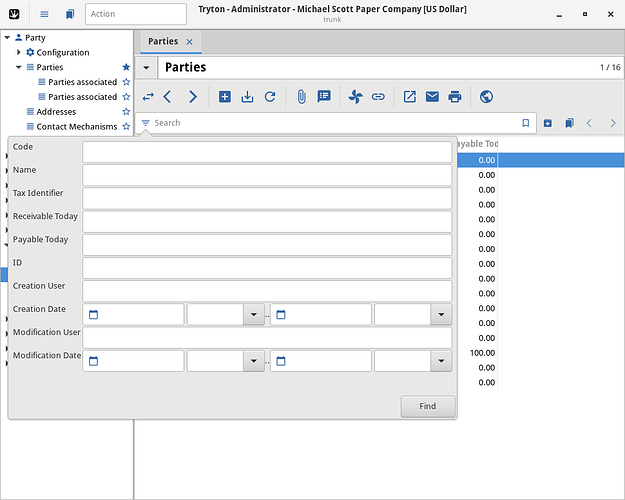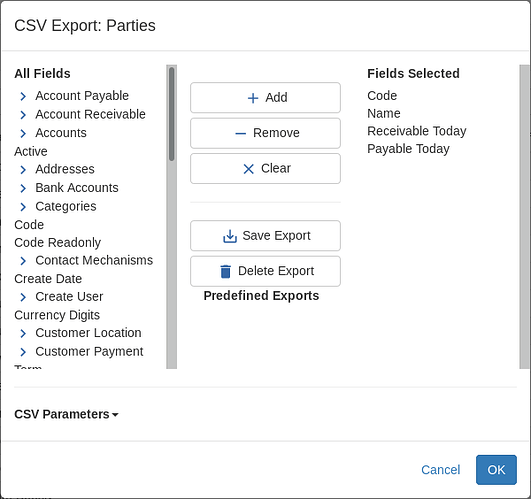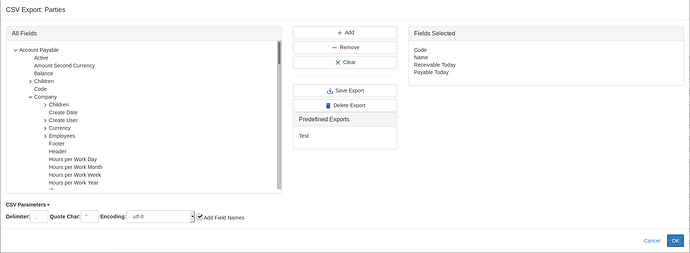This month a lot of work has been put on improving and modernize both clients but also on increasing the maintainability of the code.
We also want to remind you that the registration for Tryton Unconference at Marseille, the 4th-7th June is opened. Do not wait too much, the places are limited.
Contents:
Changes For The User
The AEAT303 Spanish report has been updated to follow the new format published this year.
The French chart of account has been updated to include the new accounts 442* from PCG 2019.
Now that the desktop client has dropped the support of GTK+2, we can use new widgets from GTK+3 such as the ShortcutsWindow. This window is displayed with the shortcut CTRL+F1 and provide a search functionality.
Another possibility with GTK+3 was to replace the filter popup window by a nicer Popover. This solved also a focus issue that happened on some window managers.
We changed the shortcut to switch tab to CTRL+Tab for desktop and ALT+Tab for web client. This is more natural for the user.
On the desktop client, we show first the login dialog before the main application window. This has a side effect that it is not possible to know the running version before being connected. As this can lead to some incomprehension if the user is using the wrong version to connect to a server, we display on the login dialog the version number.
The design of the CSV export/import on the web client was not in the best shape. So we put some effort to redesign it to be closer to the Tryton standard.
Before:
After:
On small screen with the web client, replacing search filter may be difficult. So we added a clear button when the input is filled for such case.
On the search filter popover, some kind of fields (e.g. date) are presented as a range. But to enter a equality clause, the user needs to fill both boundary entries with the exact same value. This is tedious. So we changed the range widget to automatically fill the end boundary with the value of the start boundary when this last is changed. It is still possible to create a range query by modifying the to value.
By default Tryton allows only to sale or purchase products that are marked respectively as salable and purchasable. But it happens that over time, we do no want anymore to sale or purchase a product. The problem is that existing orders may no more be valid because of such change. Now we check the flags only on draft and quotation state of the order and existing orders stay valid.
We have remove the mandatory option on analytic axis because it may break some automatic workflow which created document invalid according to the option. As we have since sometimes now a tool to show account lines for which the analytic axis were not completed.
Sometimes it is useful to be able to see quickly the deposit history of a customer. So we added a new relate link from the party form that displays their non-consumed deposit lines.
A frequent reported issue is that the size of dialogs are often too small on the desktop client. We have implemented a new algorithm that provides a better size by default.
We have improved the spacing of the reference field in the web client. Before this change, it could exceed the cell in an editable list.
Changes For The Developer
To be more compliant with HTTP status, the Tryton server will raise 429 TOO MANY REQUESTS when the login rate reach the limit. This gives also a more comprehensive error message to the user.
A request is retried a number of time if it encounters an database operational error. When such error comes from a lock failure which are performed with NO WAIT, the retries are often too fast for the other request to release the lock. So we have added an increasing delay between the retries.
In the last release, we added a Bus to the server which does long polling with the clients. But our main server is based on thread/fork. With big number of users, it can be very resource consuming to keep a thread for each long polling request. So we added an option to run the server using coroutine.
So now, the typical setup for performance is to run a thread/fork server and activate in the configuration the redirection of the bus requests to another Tryton server running with coroutine.
Until now the developer mode of the server (which activate the auto-reload on file changes) activated the debug level of the logging. It was considered annoying so we decoupled the log level from the developer mode. To increase the logging level, you just have to add more -v to the command line (or use a logging configuration).
The Model.fields_get method was a big function with all sort of tests per field type. It was not modular as the fields were hard-coded and it was difficult to maintain. We split the function between each fields which are now responsible of their own definition.
This allowed to provide the dimension and the geometry type for the Tryton GIS backend.
We added the missing support for width and height of the notebook on the web client.
We have modernized the Javascript of the web client and now we use getters and setters. This makes the Javascript code looks closer to the Python code from the desktop client.
We added the support of the window tab in the URL of the clients. This way they do not disappear when the page is reloaded and when the URL is shared.






